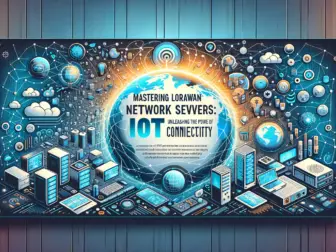Tag - LPWN
Blog , March 3, 2024 , ChirpStack, Device management, iot, LoRaWAN, LoRaWAN Base Station, LoRaWAN Gateway, LoRaWAN Network Server, LPWN, Network Server, The Things Network, TTN
The Advantages and Applications of LPWN (Low Power Wide Area Network)
LPWN (Low Power Wide Area Network) is a type of wireless communication technology that is designed to provide long-range connectivity while consuming minimal power. It is becoming increasingly popular for Internet of Things (IoT) applications due to its ability to connect a wide range of devices over large distances using low power consumption.
One of the key advantages of LPWN is its long-range connectivity. LPWN technologies like LoRa (Long Range) and Sigfox can cover distances of up to several kilometers, making them ideal for applications that require connectivity over large areas. This is particularly useful in smart city applications, where sensors and devices need to communicate over wide geographical areas.
Another advantage of LPWN is its low power consumption. LPWN devices are designed to operate on low power, allowing them to run on battery power for extended periods of time. This makes LPWN ideal for IoT applications where devices may be deployed in remote or hard-to-reach locations without easy access to power sources.
LPWN also offers cost-effective connectivity solutions for IoT applications. The infrastructure required for LPWN networks is relatively inexpensive to deploy and operate, making it an attractive option for companies looking to connect a large number of devices over a wide area without breaking the bank.
LPWN technology is being used in a wide range of applications across various industries. In agriculture, LPWN is used for monitoring soil moisture levels, crop growth, and weather conditions in remote fields. In logistics, LPWN is used for tracking shipments and monitoring the condition of goods in transit. In smart buildings, LPWN is used for controlling lighting, HVAC systems, and security cameras. The possibilities for LPWN applications are endless.
Overall, LPWN offers a practical and cost-effective solution for connecting devices over long distances with minimal power consumption. As the IoT market continues to grow, LPWN technology is expected to play an increasingly important role in enabling the connectivity of devices in a wide range of industries.
